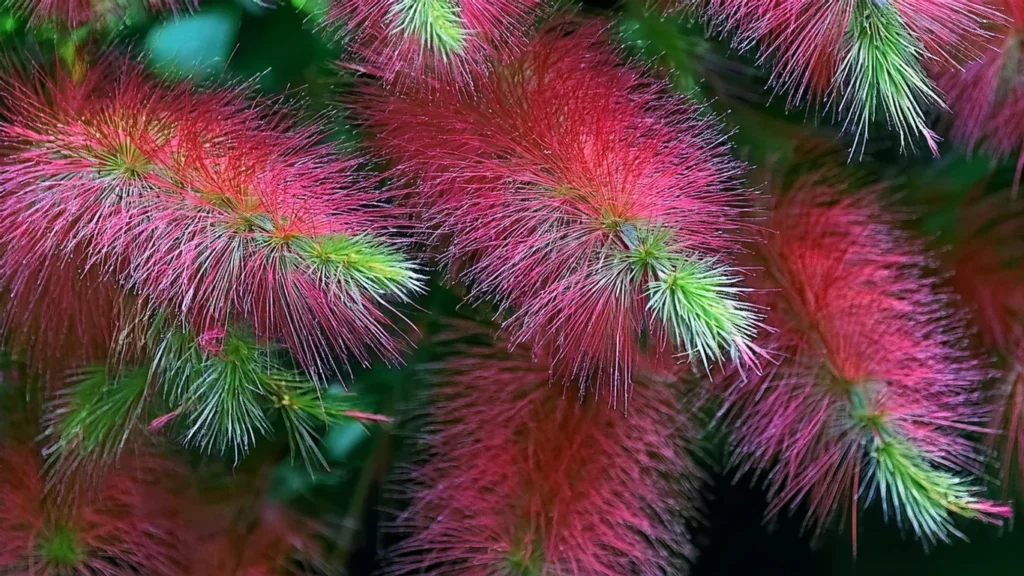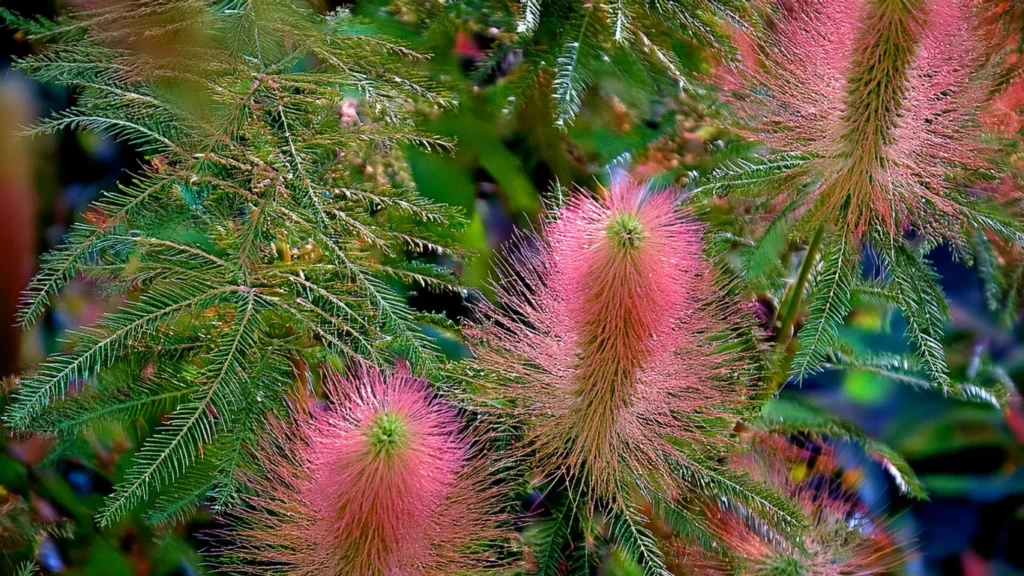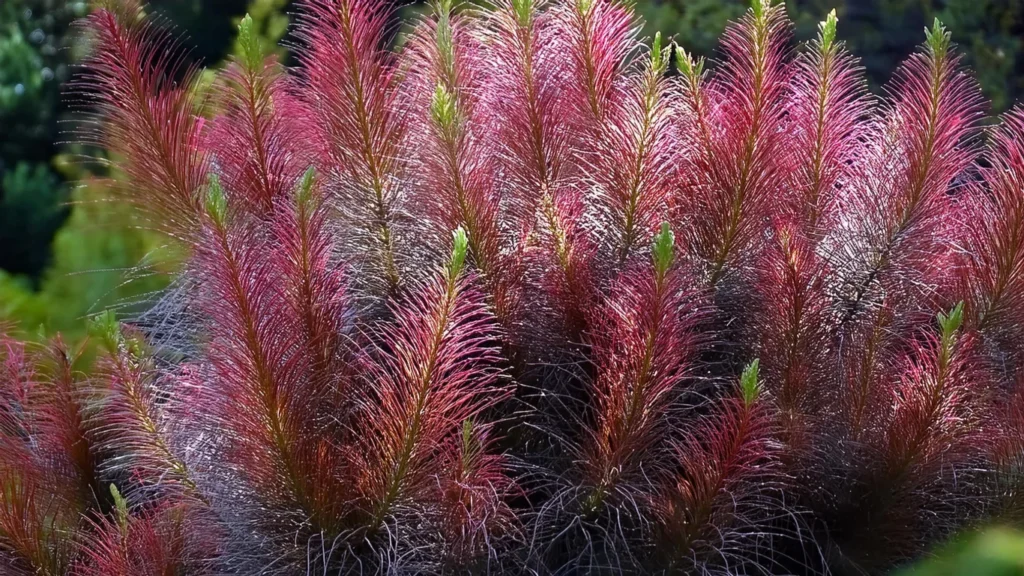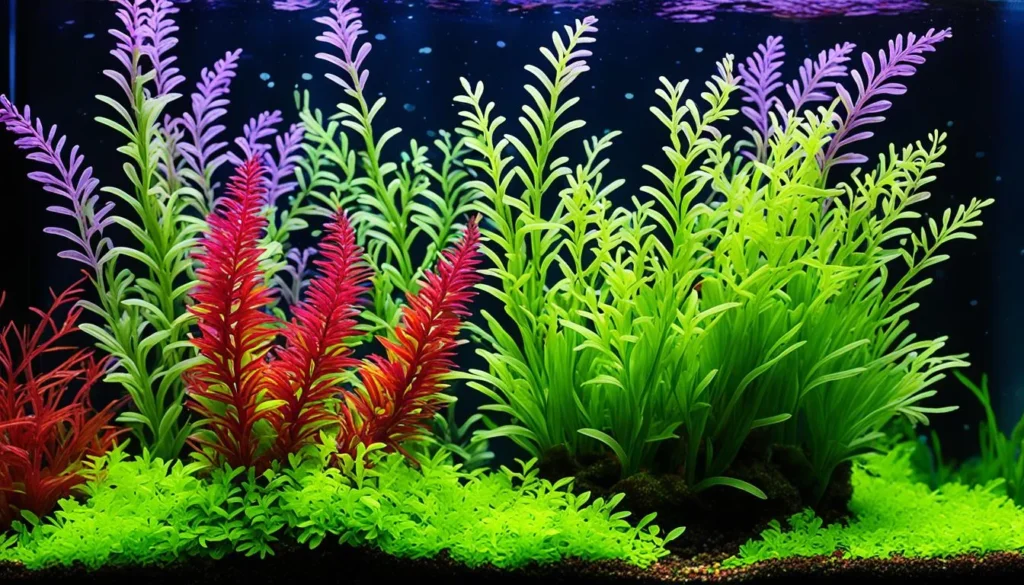Welcome to our comprehensive care guide for Rotala Wallichii, the enchanting aquarium plant that brings a touch of whimsy to any freshwater tank.
As a delicate and ornamental aquatic plant, Rotala Wallichii has captured the hearts of aquarists worldwide with its vibrant hues and delicate foliage.
In this guide, we will delve into the fascinating world of Rotala Wallichii, exploring its history, growth requirements, propagation techniques, and maintenance tips to help you create a thriving planted tank with this captivating species.
Key Takeaway
- Rotala Wallichii is a popular aquatic plant known for its delicate nature and vibrant colors.
- Understanding the growth requirements of Rotala Wallichii, including lighting, CO2, and fertilization, is crucial for its success in a planted tank.
- Propagation techniques such as pruning and planting can help you multiply your Rotala Wallichii collection.
- Proper maintenance and care, including algae prevention and common issue management, are essential for the long-term health of Rotala Wallichii.
- By following our care guide, you can create a stunning aquascape with Rotala Wallichii as the centerpiece.
Quick Stats
| Attribute | Details |
| Family Name | Lythraceae |
| Origin | Southeast Asia, specifically India and Bangladesh |
| Height | 20-50 cm (8-20 inches) |
| pH Range | 5.5 – 7.5 |
| CO2 Requirement | Moderate to High |
| Growth Rate | Moderate to Fast |
| Care Level | Moderate to Difficult |
| Color Form | Vibrant red and pink hues |
| Water Conditions | 22-28°C (72-82°F), soft to moderately hard water |
| Max Size | Forms dense clusters, typically not exceeding 20-50 cm (8-20 inches) in height |
| Lighting | Moderate to High |
| Supplements | Requires nutrient-rich substrate and regular liquid fertilization |
| Placement | Background |
| Propagation | Stem cuttings |

What Is Rotala Wallichii?
Rotala Wallichii, scientifically known as Rotala Wallichii, is an exquisite aquatic plant belonging to the Lythraceae family.
Native to Southeast Asia, this delicate and ornamental stem plant is highly prized for its captivating beauty in aquariums.
It can grow in dense clusters, creating a stunning backdrop and adding a touch of elegance to any aquatic setting.
However, it is important to note the fragility of Rotala Wallichii.
Due to its delicate nature, this aquatic plant requires careful handling and specific environmental conditions to thrive. Creating the optimal growth environment is essential for successfully cultivating Rotala Wallichii.
RELATED: Exploring The Allure Of Rotala Rotundifolia Care Guide For Beginner
To fully appreciate Rotala Wallichii’s enchanting qualities and ensure its health and vitality, let us explore the various aspects of this extraordinary aquatic plant, including its history, delicate nature, growth requirements, propagation techniques, color transitions, live arrival guarantee, and maintenance and care.
Natural Habitat And Origin
Rotala wallichii, also known as Wallich’s Rotala, originates from Asia, particularly regions in Southeast Asia.
It is native to countries such as India, Bangladesh, Bhutan, Nepal, and Thailand.
In its natural habitat, Rotala wallichii typically grows in marshy areas, boggy areas, and along the edges of slow-moving or stagnant bodies of water, including streams, ponds, and marshes.
This aquatic plant is well-adapted to submersed growth, often found growing partially or fully submerged in water.
It thrives in environments with ample sunlight and nutrient-rich water.
In the wild, Rotala wallichii displays a wide range of colors, from green to reddish-pink, depending on factors such as light intensity, water chemistry, and nutrient availability.
Due to its vibrant coloration and graceful appearance, Rotala wallichii has become a popular choice among aquarists for planted aquariums.
Its striking foliage and ability to thrive in aquatic environments make it a desirable addition to aquascapes, providing both aesthetic appeal and habitat for aquatic organisms.

Physical Characteristics
- Stem: Rotala wallichii is a stem plant, characterized by slender, upright stems that grow vertically from the substrate. These stems can range from thin to moderately thick, depending on growth conditions and pruning.
- Leaves: The leaves of Rotala wallichii are typically narrow, lanceolate, and pointed, resembling small needles. They grow alternately along the stems and may exhibit variations in color, ranging from green to shades of reddish-pink or purple, particularly under high light intensity.
- Coloration: One of the most striking features of Rotala wallichii is its vibrant coloration. Under optimal conditions, the plant displays hues of green, pink, red, or purple, with the intensity of coloration influenced by factors such as lighting, nutrient availability, and water chemistry.
- Height: Rotala wallichii can vary in height depending on growth conditions and pruning. In aquariums, it typically ranges from 15 to 40 centimeters (6 to 16 inches) tall, although it can potentially grow taller in certain conditions.
Lighting Conditions
- Proper lighting conditions are essential for the optimal growth and coloration of Rotala Wallichii. This plant requires bright lighting to thrive and display its vibrant hues. When considering lighting for your aquarium, it is important to consider both the intensity and duration of light exposure.
- For Rotala Wallichii, a lighting intensity of 3 to 5 watts per gallon is recommended. This will provide sufficient light for photosynthesis and promote healthy growth. It is advisable to use full spectrum or daylight spectrum bulbs to mimic natural sunlight.
- In terms of lighting duration, it should receive approximately 8 to 10 hours of light per day. This will allow for proper photosynthesis and ensure that the plant has enough energy to grow and thrive.

Temperature Parameters
- Temperature Range: Aim to maintain water temperatures in the range of 22°C to 28°C (72°F to 82°F). This temperature range mimics the natural habitat of Rotala wallichii and provides optimal conditions for growth and metabolism.
- Consistency: Stability is key when it comes to temperature. Avoid sudden fluctuations in water temperature, as this can stress the plant and compromise its growth. Use a reliable aquarium heater and monitor temperature regularly to ensure consistency.
- Temperature Tolerance: While Rotala wallichii can tolerate a range of temperatures within the recommended range, it may exhibit slower growth or become more susceptible to stress and disease at the extremes of the range. Aim to keep temperatures within the optimal range for consistent and robust growth.
- Aquarium Placement: Consider the placement of your aquarium when regulating temperature. Avoid placing the aquarium near sources of heat or cold drafts, as these can cause temperature fluctuations. Additionally, consider using a thermometer to monitor temperature and adjust heating or cooling devices as needed.
Optimal Water Condition
- pH: Rotala wallichii thrives in slightly acidic to neutral water conditions. Aim for a pH range of 6.5 to 7.5 for optimal growth. While this plant can tolerate a broader pH range, maintaining it within the recommended range will help ensure vigorous growth and vibrant coloration.
- Water Hardness: Rotala wallichii can adapt to a wide range of water hardness levels, but it generally prefers moderately soft to moderately hard water. Aim for a water hardness (GH) of 4 to 12 dGH (degrees of General Hardness) and a carbonate hardness (KH) of 3 to 8 dKH (degrees of Carbonate Hardness).
- Temperature: Maintain water temperatures in the range of 22°C to 28°C (72°F to 82°F) for optimal growth of Rotala wallichii. Consistent temperatures within this range mimic the plant’s natural habitat conditions and support healthy growth.
Substrate Requirement
- Nutrient-Rich Substrate: Choose a substrate specifically formulated for planted aquariums, such as nutrient-rich aquasoil or planting substrates. These substrates typically contain a blend of organic and inorganic components designed to provide essential nutrients for plant growth, including nitrogen, phosphorus, potassium, and trace elements.
- Fine-Grained Substrate: Rotala wallichii has delicate roots, so a fine-grained substrate is ideal to allow for easy root penetration and anchoring. Fine substrates such as sand or fine gravel provide a stable foundation for the plant’s root system and support nutrient uptake.
- Depth: Aim for a substrate depth of at least 2 to 3 inches (5 to 7.5 cm) to provide ample space for root development. Deeper substrates allow for better nutrient retention and provide a larger area for root spread, which promotes healthy growth of Rotala wallichii.
- Substrate Additives: Consider incorporating substrate additives such as root tabs or nutrient-rich capsules to supplement the substrate with additional nutrients. These additives can provide a localized nutrient boost around the roots of Rotala wallichii, promoting vigorous growth and vibrant coloration.

Placement Option
- Background Planting: This can be placed in the background of your aquarium to create a lush and vibrant backdrop. Plant taller specimens towards the rear of the tank to add depth and dimension to the aquascape. This placement allows the plants to grow vertically and create a dense wall of foliage behind other aquarium features.
- Midground Accent: Alternatively, you can use Rotala wallichii as a midground accent plant to add color and texture to the middle portion of your aquarium. Plant it in clusters or small groups among other foreground or midground plants to create focal points and visual interest.
- Foreground Highlight: While Rotala wallichii is typically used as a background or midground plant, you can also plant it in the foreground of your aquarium to create a striking focal point. Plant shorter specimens in the front corners or along the sides of the tank to draw attention and add depth to the aquascape.
Recommended Tank Size
- Nano Tanks: Rotala wallichii can be grown in nano tanks with capacities ranging from 5 to 20 gallons. In smaller tanks, it’s essential to maintain appropriate lighting and CO2 levels to support healthy growth and prevent algae issues.
- Medium Tanks: For medium-sized tanks ranging from 20 to 50 gallons, Rotala wallichii can be used as a background or midground plant. These tanks provide more space for the plant to grow and spread, allowing for a lush and vibrant backdrop or focal point in the aquascape.
- Large Tanks: In larger tanks exceeding 50 gallons in capacity, Rotala wallichii can be planted in greater quantities to create dense, bushy backgrounds or focal areas. Large tanks offer ample space for the plant to flourish and can accommodate more intricate aquascape designs.

Suitable Tank Mates
- Small to Medium-sized Fish: Many small to medium-sized fish species make excellent tank mates for Rotala wallichii. Examples include neon tetras, ember tetras, rasboras, small gouramis, dwarf cichlids (such as Apistogramma species), and small peaceful barbs. Avoid large or aggressive fish species that may uproot or damage the plants.
- Shrimp: Shrimp, such as cherry shrimp, amano shrimp, and ghost shrimp, are excellent tank mates for Rotala wallichii. They are peaceful scavengers that help keep the aquarium clean by feeding on algae and detritus. However, be cautious with larger shrimp species that may disturb the substrate.
- Snails: Many species of freshwater snails, such as nerite snails, Malaysian trumpet snails, and ramshorn snails, can coexist peacefully with Rotala wallichii. Snails help clean algae from the aquarium glass and substrate, contributing to overall maintenance.
- Bottom Dwellers: Small bottom-dwelling fish and invertebrates, such as Corydoras catfish, otocinclus catfish, and small plecos (such as bristlenose plecos), can be compatible tank mates for Rotala wallichii. These species occupy the lower levels of the aquarium and typically do not disturb the plants.
Nutritional Needs
To meet the nutritional needs of Rotala wallichii and promote healthy growth, it’s important to provide a balanced diet of macro and micronutrients.
Here are the key nutritional requirements for Rotala wallichii:
RELATED: Beginner’s Guide To Plant Rotala Manipurensis In Aquascapes
Macronutrients
- Nitrogen (N): Essential for chlorophyll synthesis and overall plant growth. Nitrogen is a component of amino acids, proteins, and nucleic acids.
- Phosphorus (P): Required for energy transfer, cell division, and nucleic acid synthesis. Phosphorus is essential for root development and flowering.
- Potassium (K): Plays a role in enzyme activation, osmoregulation, and stomatal regulation. Potassium promotes strong stems and improves disease resistance.
Micronutrients
- Iron (Fe): Crucial for chlorophyll production and photosynthesis. Iron deficiency can lead to chlorosis (yellowing of leaves).
- Manganese (Mn), Zinc (Zn), Copper (Cu): Cofactors for various enzymes involved in metabolic processes and hormone regulation.
- Boron (B), Molybdenum (Mo): Essential for cell wall synthesis, nitrogen metabolism, and nitrogen fixation in legumes.
- Carbon (C): Obtained from carbon dioxide (CO2) in the water. Carbon is a primary component of organic molecules synthesized during photosynthesis.
Rotala Wallichii Cultivation Tips
- Carbon Dioxide (CO2): Consider supplementing carbon dioxide (CO2) in your aquarium, especially in setups with higher lighting levels. CO2 supplementation can enhance photosynthesis and promote robust growth in Rotala wallichii. Aim for CO2 levels of around 20-30 parts per million (ppm) for optimal growth.
- Nutrient Supplementation: Provide a balanced fertilization regimen to ensure that it receives essential nutrients for healthy growth. Use a liquid fertilizer or root tabs to supplement macronutrients (nitrogen, phosphorus, potassium) and micronutrients (iron, manganese, etc.). Adjust the fertilization schedule based on plant growth and water parameters.
- Substrate: Plant Rotala wallichii in a nutrient-rich substrate to support root development and nutrient uptake. Fine-grained substrates such as aquasoil or nutrient-rich planting substrates are suitable options. Ensure adequate substrate depth (2-3 inches) to accommodate root growth.
- Water Parameters: Maintain stable water parameters within the recommended range for tropical aquarium plants. Rotala wallichii thrives in slightly acidic to neutral water (pH 6.5-7.5) with moderate hardness. Regular water changes help maintain water quality and remove accumulated organic matter.
Plant Propagation Tips
- Healthy Parent Plant: Start with a healthy parent plant. Ensure that the plant you are taking cuttings from is disease-free and vibrant. Healthy parent plants will produce healthier cuttings.
- Selecting Cuttings: Look for healthy stems with good coloration and no signs of disease or damage. These stems should ideally be at least a few inches long to ensure successful propagation.
- Trimming Cuttings: Using sharp, clean scissors or pruning shears, trim the selected stems just below a node. Nodes are the points on the stem where leaves emerge. You can make multiple cuttings from a single stem to propagate several new plants.
- Removing Lower Leaves: Strip away the lower leaves from the stem cuttings. This will expose the nodes, which are where new roots will emerge.
- Planting Cuttings: Plant the trimmed stem cuttings into the substrate of your aquarium. Make sure to bury the stem into the substrate deep enough so that it stays upright. You can plant multiple cuttings in close proximity to create a dense and visually appealing effect.

Benefits Of Planting Rotala Wallichii
- Aesthetic Appeal: Rotala wallichii is prized for its vibrant reddish-orange coloration, which can add a striking visual contrast to the greenery of other plants in your aquarium. Its delicate, feathery leaves and bushy growth pattern create a graceful and captivating appearance.
- Natural Filtration: Like all aquatic plants, it helps to naturally filter the water in your aquarium by absorbing nutrients such as nitrates, ammonia, and phosphate. This can contribute to maintaining water quality and creating a healthier environment for your fish and other aquatic inhabitants.
- Oxygenation: Through photosynthesis, Rotala wallichii releases oxygen into the water, which is essential for the respiration of fish and other aquatic organisms. By increasing oxygen levels, the plant helps to create a more oxygen-rich environment, promoting the overall well-being of your aquarium inhabitants.
- Algae Control: By outcompeting algae for nutrients and light, it can help to control the growth of nuisance algae in your aquarium. Its dense growth habit shades the substrate, reducing available light for algae to photosynthesize. Additionally, the plant’s nutrient uptake can help to starve algae of the resources it needs to thrive.
Addressing Common Issues And Diseases
- Yellowing or browning of leaves may indicate nutrient deficiencies or improper water conditions. Evaluate and adjust lighting, fertilization, and water parameters accordingly.
- Stunted growth: Insufficient lighting or inadequate nutrient supply, such as lack of CO2, can inhibit plant growth. Consider optimizing these factors to promote healthy growth.
- Root rot: Excessive moisture, poor substrate conditions, or inadequate root aeration can lead to root rot. Ensure proper water circulation and maintain a well-drained substrate.
- Pest infestations: Keep an eye out for pests such as snails, aphids, or spider mites, which can damage Rotala Wallichii. Remove pests manually or consider using appropriate pest control methods.
Conclusion
Rotala Wallichii is a whimsical aquatic plant that adds splendor to any aquarium.
Its delicate nature, vibrant color transitions, and fast growth make it a captivating centerpiece for freshwater tanks.
By understanding its growth requirements, propagation techniques, and proper maintenance, you can ensure the health and vitality of this exquisite plant.
Whether you’re an experienced aquarist or a beginner, it offers a rewarding journey in aquascaping.
With the right lighting conditions, CO2 supplementation, and attention to water parameters, you can create a lush forest of green and red hues, transforming your aquarium into a mesmerizing aquatic haven.
RELATED: Discovering Rotala Mexicana Care Guide For Beginners
Frequently Asked Questions
What Techniques Can I Use To Propagate Rotala Wallichii?
To propagate Rotala Wallichii, you can use techniques such as pruning and planting. These methods allow you to multiply your plant collection and create a visually appealing aquascape.
Why Is Rotala Wallichii Known For Its Fast Growth Rate?
Rotala Wallichii exhibits a fast growth rate, making it a popular choice for planted tanks. Various factors contribute to its rapid growth, and managing its growth in an aquarium setting is crucial for maintaining its overall health.
How Does The Color Of Rotala Wallichii Transition?
Rotala Wallichii exhibits stunning color transitions, ranging from emerald greens to fiery reds. Lighting conditions, CO2 levels, and other environmental factors influence the plant’s coloration. Understanding these factors is crucial for achieving the desired vibrant hues of Rotala Wallichii in your aquarium.
What Is The Live Arrival Guarantee For Rotala Wallichii?
When purchasing Rotala Wallichii, it is important to understand the live arrival guarantee provided by suppliers. This section will discuss the guarantee’s conditions and provide tips on ensuring the safe arrival of your Rotala Wallichii plants.
What Maintenance And Care Does Rotala Wallichii Require?
Proper maintenance and care are crucial for the long-term health and vitality of Rotala Wallichii. The section will cover various aspects of maintenance, including algae prevention and management strategies. It will also address common issues and diseases that may affect Rotala Wallichii and provide tips on addressing them effectively.
- Unveiling The Wonders Of Riccia Fluitans In Aquascapes - August 7, 2024
- Vallisneria Gigantea Var. Guide To Care And Cultivation At Home - July 31, 2024
- Vesicularia Dubyana Care & Growth Guide Tips For Beginner Gardeners - July 30, 2024
